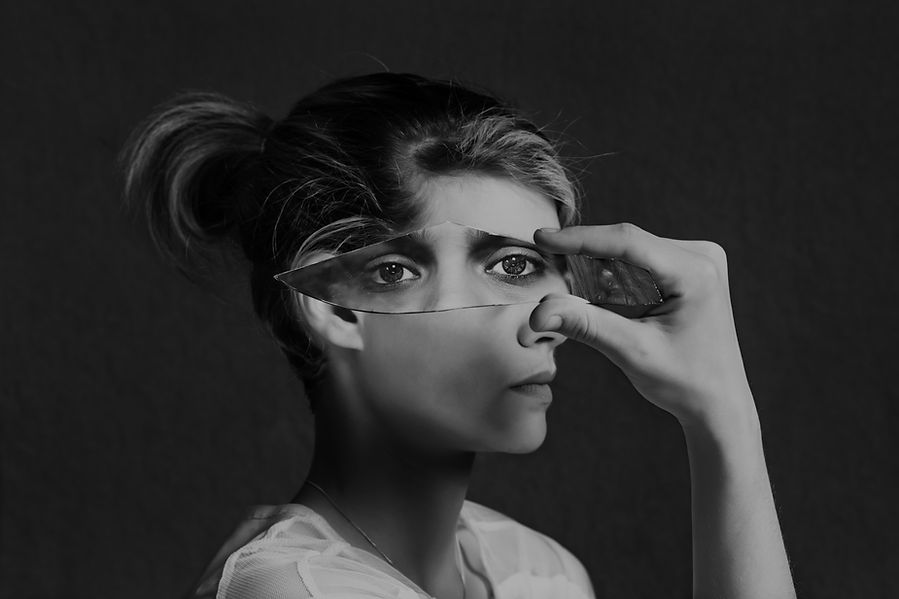


What is BDD?
BDD stands for Body Dysmorphic Disorder.
It is an obsessive-compulsive and related disorder marked by a preoccupation with a perceived flaw, meaning that an individual with it tends to obsess over a given feature that they believe to be particularly ugly or unacceptable. The preoccupation can affect the individual's life psychologically, behaviorally, and psychosocially. Social engagement, self-esteem, identity, and more can be greatly impaired by the perception. The beliefs of the perceived flaw can either be correct or incorrect, which determines the level of insight that the individual has. Regardless of the level of insight, the overarching overvaluing of appearance leads to severe distress.
BDD Facts:
Onset- adolescence
Prevalence- between 1.7% and 2.4%
Feature- most often the face, hair, or skin
Desire- to appear 'normal', not beautiful
*It is important to note that BDD lies on a spectrum, and therefore can look very different for each individual. The severity is measured according to the degree of symptoms that the individual experiences.
Symptoms
What does BDD look like?
Safety Behaviors
These are behaviors that individuals with BDD tend to have as a result of their dissatisfaction, shame, and distress towards a specific body feature. They serve as a mask or false sense of comfort and safety that provides temporary relief. Safety behaviors can consume between 3 and 8 hours of the individual's day because they become so natural and automatic, taking away time that could be used for social interaction, education, and much more. Some examples of safety behaviors include: mirror checking, grooming, and camouflaging.
Mirror Checking/Avoidance
One very common safety behavior that individuals with BDD exhibit involves observing the perceived flaw in reflective surfaces such as mirrors, windows, or car doors. For some, hours may be spent in front of a mirror trying to fix the flaw, while others avoid mirrors because they bring too much distress. It is also possible for some to witch from checking to avoidance depending on mood, location, lighting, etc.

Grooming

Excessively touching or attending to the perceived flaw is a safety behavior known as grooming.
Hiding the perceived flaw with clothing, accessories, make-up, etc. is referred to as camouflaging.
Camouflaging

Comorbidity
Comorbidity refers to the simultaneous existence of two conditions in a given individual, and is very common with BDD. Depression, social or general anxiety, and eating disorders such as Anorexia Nervosa and Bulimia Nervosa are conditions that are common among individuals with BDD. Because of the comorbidity, BDD can hide behind these other related conditions and go undiagnosed.
Judgement
Those with BDD don't simply judge themselves harshly, but also tend to scrutinize features of others that correspond to their own area of concern. Seeing someone else and judging their appearance then causes them to reflect on and judge their own more harshly.
Aestheticality
Researchers suggest those with BDD might have an “innate sensitivity to aesthetic perception” that leads them to view themselves more critically, have a higher value of physical appearance, and have higher self-objectification.
Diagnosis

Treatment Methods
Pharmacotherapy
SSRIs are a pill that increase serotonin (a happy chemical) in your brain. They are helpful with BDD because of the comorbidity that it has with depression. They are the most common treatment for BDD alongside CBT.
CBT
CBT
CBT stands for Cognitive Behavioral Therapy. It focuses on re-shaping the negative, harmful, and debilitating thoughts that result from BDD. Gradual exposure to feared situations is often combined with CBT through Exposure Response Prevention.
Others
Other options for treatment include Inference Based Therapy (IBT), Interpretation Bias Modification, Progressive Muscle Relaxation, and Electroconvulsive Therapy, but these methods are only briefly studied.


